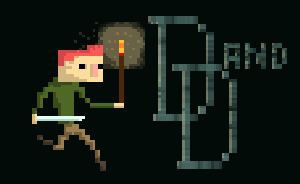Tabletop role playing games are meant to be fun.

For some, this fun means meticulously researching the different languages and character traits of their chosen race and fantasy religion, for others, the mechanics and combat strategy dominate. And for a lot of us, it involves sitting down with some beers and pretending to be a wizard while joking around with some buddies.
In the following post, I will explain my simple strategy for creating an engaging, organic character who can function in almost any situation, without giving a 20 minute explanation of where she got her boots.
1. Choose Her Temperament
The Four Temperaments are a fascinating subject in their own way, and figuring out which combination of temperaments you the player are can enrich your life – but for this purpose, try to just choose one or a combination of two of the following temperaments your character fits into.
Sanguine:

The sanguine temperament is traditionally associated with air. People with this temperament tend to be lively, sociable, carefree, talkative, and pleasure-seeking. They may be warm-hearted and optimistic. They can make new friends easily, be imaginative and artistic, and often have many ideas. They can be flighty and changeable; thus sanguine personalities may struggle with following tasks all the way through and be chronically late or forgetful.
Choleric

The choleric temperament is traditionally associated with fire. People with this temperament tend to be egocentric and extroverted. They may be excitable, impulsive, and restless, with reserves ofaggression, energy, and/or passion, and try to instill that in others.
They tend to be task-oriented people and are focused on getting a job done efficiently; their motto is usually “do it now.” They can be ambitious, strong-willed and like to be in charge. They can show leadership, are good at planning, and are often practical and solution-oriented.
They appreciate receiving respect and esteem for their work
Melancholic

The melancholic temperament is traditionally associated with the element of earth. People with this temperament may appear serious, introverted, cautious or even suspicious. They can become preoccupied with the tragedy and cruelty in the world and are susceptible to depression and moodiness. They may be focused and conscientious. They often prefer to do things themselves, both to meet their own standards and because they are not inherently sociable.
Phlegmatic

The phlegmatic temperament is traditionally associated with water. People with this temperament may be inward and private, thoughtful, reasonable, calm, patient, caring, and tolerant. They tend to have a rich inner life, seek a quiet, peaceful atmosphere, and be content with themselves. They tend to be steadfast, consistent in their habits, and thus steady and faithful friends.
Remember – you can combine these, or just choose one – but if you have a general idea of your characters temperament that will allow you to play a much more genuine character.
2. Choose her background, bond, quirk, and flaw.

I will admit I stole this directly out of 5th Edition D&D, and I recommend picking up those books if you have a chance, because their background system is really well done.
In a nutshell, write a one sentence response to each of these questions:
What did she do before she became an adventurer?
Example: She was the youngest of three sisters and rather than stay on the farm, she set out for fame and fortune.
What is the most important thing in her life and how does it affect her adventuring?
Example: It was always about money – she wanted to make more money than her poor farming family had ever seen.

What is “weird” or “different” about her?
Example: She couldn’t make eye contact for extended periods of time. If someone looked at her for more than 5 seconds, she would look away toward the ground.
What is her fatal flaw?
Make this organic – there is nothing worse than a “Mary Sue” with no flaw.
Example: She would frequently throw caution to the wind after just one drink of any intoxicating liquid, putting the whole party in danger because of her ill judgment.
3. Keep it generally consistent and add/do things that help you enjoy and connect with the character more – if you find them fun.

So long as it increases your enjoyment, create whatever backstory you want for your character – but remember – this is D&D – that character could and very well may die. I personally enjoy creating little novelty crafts, like a characters sigil or sign, or a wood burned dice box with an elf’s family logo, and a lot of people enjoy drawing or painting epic portraits like this one to the left.
Mine, however, typically look a bit more like this:

Hopefully this guide is helpful – I have been using this system every time I play and RPG and I find in about 10 minutes I can create a pretty solid backstory.
. . .
Originally published by Ed